 |
How to Nurture Wholistic Wellbeing |
1.00 |
Educators are nurtures, which means they make tremendous sacrifices to empower their students to grow and develop. That is a significant part of why education is commonly considered the noblest profession. Self-sacrifice, though, can become a liability when not considered in proper context; just as a cell phone battery must be recharged regularly so as not to lose all capacity, so too must the life of the educator be recharged so as not to lose the passion for this noble calling. The good news is that not only is personal balance attainable, but as we nurture it, we will find yourself maximizing our impact—both instructionally and relationally—in the classroom and beyond. Based on material from the book The Power of a Teacher, this workshop guides participants through the five areas of wellbeing: physical, occupational, emotional, financial, and spiritual. Not only does the workshop empower educators with a mandate for self-care, it offers practical, actionable strategies to achieve and maintain wellbeing. One of the most loving things we can do for those depending on us is to offer them the best version of ourselves Let’s get our recharge on! |
 |
HR Strategic Planning |
1.00 |
For your Human Resources Department to truly make a strategic impact within your organization, it's vital to be able to share the strategic goals of your Human Resources department. Otherwise, how will your organization leaders understand what value your department adds - and also the important role that the Human Resources Department plays in the overall organizational strategic plan? This session will cover how the World Famous San Diego Zoo's Human Resources Team developed a World Class HR Strategic Plan - taking their Human Resources practices to another stratosphere, and creating award-winning Best Practices that are now being shared with companies nationwide. |
 |
Human Relations Skill Development |
2.00 |
Being able to communicate effectively is an essential human relations skill for school-age care professionals. To be a good communicator, school-age professionals need to understand the components of communication and how the communication process works. They need to identify barriers to clear communication and develop strategies for minimizing or eliminating barriers to communication. School-age care professionals also need to work cooperatively with other team members to solve problems and conflicts. This requires an understanding of how teams work and the characteristics of effective teams. Assessing the current status of personal human relations skills helps each professional identify priorities for making improvements to these skills. |
 |
Human Relations Skill Development (Collection) |
2.00 |
Being able to communicate effectively is an essential human relations skill for school-age care professionals. To be a good communicator, school-age professionals need to understand the components of communication and how the communication process works. They need to identify barriers to clear communication and develop strategies for minimizing or eliminating barriers to communication. School-age care professionals also need to work cooperatively with other team members to solve problems and conflicts. This requires an understanding of how teams work and the characteristics of effective teams. Assessing the current status of personal human relations skills helps each professional identify priorities for making improvements to these skills. |
 |
Human Relations Skill Development: Communication and Team Building for Paraprofessionals |
1.00 |
Being able to communicate effectively is an essential human relations skill for paraprofessionals. To be a good communicator, paraprofessionals need to understand the components of communication, and how the communication process works. They need to identify barriers to clear communication and develop strategies for minimizing or eliminating barriers to communication. Assessing the current status of personal human relations skills helps each professional identify priorities for making improvements to these skills. |
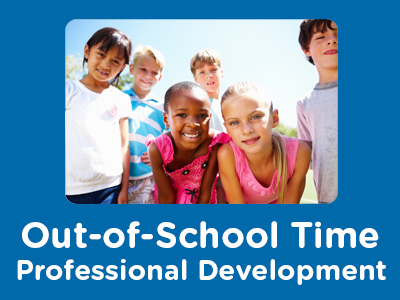 |
Human Relations Skill Development: Cultivating Communication Skills |
0.67 |
Being able to communicate effectively is an essential human relations skill for school-age care professionals. To be a good communicator, school-age professionals need to understand the components of communication, and how the communication process works. They need to identify barriers to clear communication, and develop strategies for minimizing or eliminating barriers to communication. School-age care professionals also need to work cooperatively with other team members to solve problems and conflicts. In this course, we will explore strategies for cultivating good communication skills. |
 |
Human Relations Skill Development: Focus on Leadership Styles and Conflict Management |
2.00 |
Research indicates that those in positions of leadership use a variety of different leadership and management styles. A person’s effectiveness as a leader is often directly linked to his or her leadership style. It is important for OST professionals to be aware of the assumptions and characteristics of different leadership styles. Knowledge of different leadership styles can help OST professionals reflect on their own leadership style and assess its effectiveness. It can also help OST professionals take a proactive approach to applying different leadership styles and techniques, depending on the situation.
Leaders also use a variety of different styles when it comes to managing and resolving conflicts. By understanding how to diagnose the causes and dynamics of conflict and understanding the characteristics of different conflict management styles, OST professionals can choose the best conflict management strategy for each situation.
There are a number of skills that enhance the ability of OST professionals to employ different leadership and conflict management styles effectively. When OST professionals are aware of these skills and their own skill levels, they can set priorities for ongoing development of leadership skills. |
 |
Human Relations Skill Development: Focus on Leadership Styles and Conflict Management (Collection) |
2.00 |
Research indicates that those in positions of leadership use a variety of different leadership and management styles. A person’s effectiveness as a leader is often directly linked to his or her leadership style. It is important for OST professionals to be aware of the assumptions and characteristics of different leadership styles. Knowledge of different leadership styles can help OST professionals reflect on their own leadership style and assess its effectiveness. It can also help OST professionals take a proactive approach to applying different leadership styles and techniques, depending on the situation.
Leaders also use a variety of different styles when it comes to managing and resolving conflicts. By understanding how to diagnose the causes and dynamics of conflict and understanding the characteristics of different conflict management styles, OST professionals can choose the best conflict management strategy for each situation.
There are a number of skills that enhance the ability of OST professionals to employ different leadership and conflict management styles effectively. When OST professionals are aware of these skills and their own skill levels, they can set priorities for ongoing development of leadership skills. |
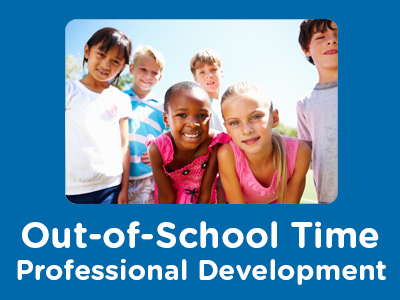 |
Human Relations Skill Development: Focus on Leadership Styles and Conflict Management: Managing Conflict |
1.00 |
Research indicates that those in positions of leadership use a variety of different leadership and management styles. A person’s effectiveness as a leader is often directly linked to his or her leadership style. It is important for school-age care professionals to be aware of the assumptions and characteristics of different leadership styles. Knowledge of different leadership styles can help school-age care professionals reflect on their own leadership style, and assess its effectiveness. Leaders also use a variety of different styles when it comes to managing and resolving conflicts. By understanding how to diagnose the causes and dynamics of conflict, and understanding the characteristics of different conflict management styles, school-age care professionals can choose the best conflict management strategy for each situation. |
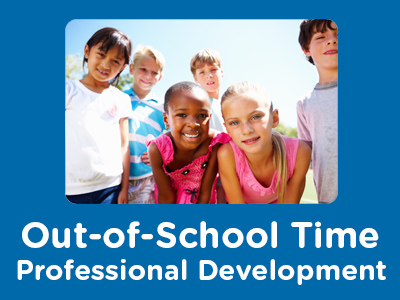 |
Human Relations Skill Development: Good Communication Skills |
0.67 |
Being able to communicate effectively is an essential human relations skill for school-age care professionals. To be a good communicator, school-age professionals need to understand the components of communication and how the communication process works. They need to identify barriers to clear communication and develop strategies for minimizing or eliminating barriers to communication. School-age care professionals also need to work cooperatively with other team members to solve problems and conflicts. In this course, we will explore good communication skills. |
 |
Human Relations Skill Development: Leadership Styles and Conflict Management for Paraprofessionals |
1.50 |
Research indicates that those in positions of leadership use a variety of different leadership and management styles. A person’s effectiveness as a leader is often directly linked to their leadership style. It is important for paraprofessionals to be aware of the assumptions and characteristics of different leadership styles. Knowledge of different leadership styles can help paraprofessionals reflect on their own leadership style, and assess its effectiveness. It can also help paraprofessionals take a proactive approach to applying different leadership styles and techniques, depending on the situation.
Leaders also use a variety of different styles when it comes to managing and resolving conflicts. By understanding how to diagnose the causes and dynamics of conflict, and understanding the characteristics of different conflict management styles, paraprofessionals can choose the best conflict management strategy for each situation. |
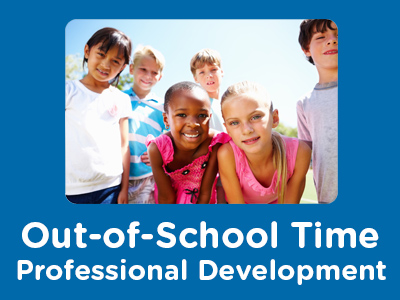 |
Human Relations Skill Development: Leadership Styles and Conflict Management: Leadership Styles |
1.00 |
Research indicates that those in positions of leadership use a variety of different leadership and management styles. A person’s effectiveness as a leader is often directly linked to his or her leadership style. It is important for school-age care professionals to be aware of the assumptions and characteristics of different leadership styles. Knowledge of different leadership styles can help school-age care professionals reflect on their own leadership style, and assess its effectiveness. |
 |
Human Relations Skill Development: Team Building Skills and Strategies |
0.67 |
Being able to communicate effectively is an essential human relations skill for school-age care professionals. To be a good communicator, school-age professionals need to understand the components of communication, and how the communication process works. They need to identify barriers to clear communication, and develop strategies for minimizing or eliminating barriers to communication. School-age care professionals also need to work cooperatively with other team members to solve problems and conflicts. In this course, we will explore skills and strategies for team building. |
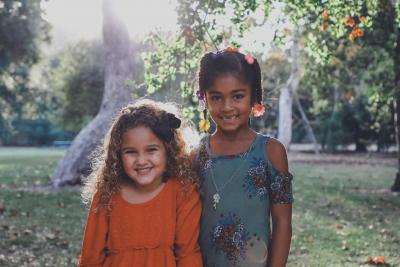 |
I Am: Supporting Self-Awareness and Self-Management |
2.00 |
Children and youth develop social-emotional skills and character over time and through a variety of experiences.
Expanded Learning Programs strongly support three foundational areas of Social-Emotional Learning and Character Building:
- I AM (Interpersonal Connections)
- I BELONG (Interpersonal Connections)
- I CAN (Belief and Mindset)
This course focuses on the I Am skills.
By the end of this course, you will:
- Understand how young people's responses affect personal emotion and behavior.
- Learn how group agreements can support self-awareness and self-management in children and youth.
- Learn strategies and resources to support I Am skill building with children and youth. |
 |
I Belong: Supporting Social Awareness and Interpersonal Skills |
2.00 |
We all have lived full lives with varied experiences, both positive and negative. Whether we are aware or not, our experiences, including our social, political and cultural beliefs and background, affect our practice with youth. During this course, participants will learn about how culturally grounded beliefs and background affect our practice with youth, how to help raise our awareness of those factors, and reflect on current and new strategies that support the development young people’s social-awareness and interpersonal skills. |
 |
I Can: Supporting Growth Mindset and Self-Efficacy |
2.00 |
We all have areas in our life that we approach with a growth mindset and others we approach with a fixed mindset. In order for us to be positive role models to youth, we as adults need to reflect on our own mindsets and how they may impact how we behave at work and with youth. During this course, participants will learn about what self-efficacy and growth mindset are, explore our own mindset and the potential impact it has on youth, and reflect on current and new strategies to support the development young people’s growth mindset and self-efficacy. |
 |
Iceberg Thinking |
0.25 |
This course covers the fundamentals of iceberg thinking. Iceberg thinking is about questioning the world around you. Whether you’re a teacher, student, or self-directed learner, this course explores ideas about everyday life that everyone can relate to. Iceberg thinking is just one of many courses we offer. This course will help you learn about what iceberg thinking is and how it can help you see things differently in your day-to-day life. |
 |
Identifying Essential Components of Child Care Supervision (CDA 1 & 5) |
2.00 |
This course delves into the heart of quality child care: effective supervision. Identify and analyze key components of best practices, fostering safe and enriching environments for children. Through critical reflection and comparison of current methods, discover invaluable opportunities to enhance your supervision strategies and empower a thriving learning environment. |
 |
Image Editing |
1.25 |
This course covers photo file formats, editing software, and fixing common image problems. You will also learn about making adjustments to your images to make them look more professional. |
 |
Implicit Bias |
1.00 |
In this course, you’ll learn about implicit biases that happen despite our best intentions. After completing this course, you will be able to:
Define implicit bias.
Describe how implicit bias can impact the workplace or an organization.
Identify the steps you can take to further educate yourself about this topic.
|
 |
Implicit Bias (Corrections) |
1.00 |
In this course, you’ll learn about implicit biases that happen despite our best intentions. After completing this course, you will be able to:
Define implicit bias.
Describe how implicit bias can impact the workplace or an organization.
Identify the steps you can take to further educate yourself about this topic. |
 |
In Ovo Sexing |
0.50 |
This webinar will discuss the advantages that an avian breeding facility will gain, when using in ovo sexing as a management tool. Tom will cover the details of shell removal, needle selection, blood removal and shell repair post-sampling. The presentation will finish up with a short discussion of DNA analysis and examples of species currently managed at San Diego Zoo Global’s bird breeding programs. |
 |
Incentives and Motivation |
2.00 |
Motivation, incentives and rewards can help pull a team together and keep a successful staff on track. In our profession, incentives rarely come in the form of extra earnings, so we have to be creative in designing incentives. During this course, participants will look at several strategies for providing meaningful incentives for staff, as well as techniques to determine what motivates them and their staff. |
 |
Incident Command System (ICS) Overview for Executives and Senior Officials |
2.00 |
This course covers the Incident Command System and the different departments that fall under it. It also covers the roles of officials and staff under the ICS and how to incorporate them into incident management. |
 |
Incident Command System ICS-100 |
0.50 |
This course covers the Incident Command System, a systemized and standardized approach to incident management. The Incident Command System works for small and large incidents. |


























